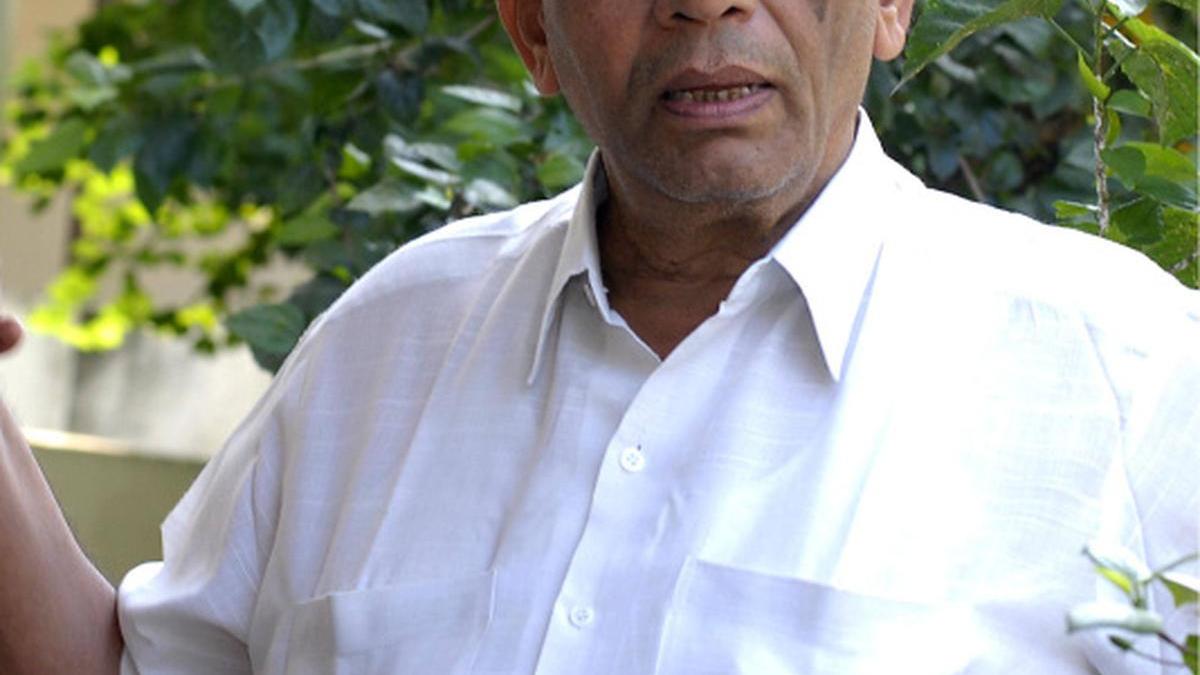
Violinist Akella Mallikarjuna Sharma leaves an enduring legacy
The Hindu
Akella Mallikarjuna Sharma, a revered Carnatic musician, left a lasting legacy through his scholarship and dedication to excellence and innovation.
Aspiring Carnatic music vocalists typically begin their training by singing the Purandaradasa composition Sri Gananatha as their first gitam, following their initial lessons in swaras. Akella Mallikarjuna Sharma strongly opposed the selection of Sri Gananatha as the first song for beginners, arguing that the composition requires a solid understanding of raga and swara, making it unsuitable for beginners. While many musicians held different opinions, they respected Sharma’s perspective. His views on various aspects of Carnatic music remained his top priority, rooted in a commitment to its purity and development. With his passing on October 20, 2024, in Hyderabad, the Carnatic music community and countless admirers in India and around the world were left in shock.
As a distinguished violinist, esteemed guru, and an accomplished author, Sharma became a luminary in classical music. In the days when All India Radio and Doordarshan dominated the airwaves, Mallikarjuna Sharma was a household name , widely recognised for his skilful accompaniment to renowned vocalists. He earned widespread acclaim and admiration, performing at prestigious events like the Akashvani Sangeet Sammelan and the National Programme of Music. His extensive performances across India took him to venues such as Chennai’s Music Academy, where he accompanied numerous eminent artistes.
Born in 1938 in Mummidivaram, East Godavari district of Andhra Pradesh, Akella Mallikarjuna Sharma’s musical journey began under the guidance of his father, Ashwatthanarayana Murthy, and further blossomed with the mentorship of P P Somayajulu. An admirer of violin virtuoso M.S. Gopalakrishnan, Sharma developed a unique style that fused traditional mastery with his own artistic flair.
Sharma’s close association with Nedunuri Krishnamurthy opened new avenues for him. Following a brief tenure as a staff artiste at All India Radio, Hyderabad, he spent over 30 years as a violin lecturer across various government colleges of music and dance in Andhra Pradesh, beginning in 1961. Serving as principal for 12 years, he significantly shaped the musical careers of several students until his retirement in 1996.
Sharma’s major contribution to Carnatic music lies in his revival and emphasis on Prastara Tala, a complex and often overlooked rhythmic structure in traditional renditions. His work brought this intricate rhythm to the forefront, enriching and expanding the rhythmic possibilities within Carnatic music. Over four decades of research, he uncovered several hidden aspects of Prastara, greatly enriching the field with new insights. He authored several books, including Talaprastara Sagara, which received accolades from Telugu University and revised editions like Talaprastara Ratnakara and Indian Genius in Talaprastara. His scholarly work also includes Talaprastara of Nisshanka Sharngadeva’s Sangeeta Rathnakara: A Critical Interpretation and Systematisation of Prastara Details of Deshi Talas. Another notable work, Sangeetha Swararaga Sudha, delves into the intricacies of raga alapana and swarakalpana.
Voruganti Ananda Mohan, the founder of Sangeetha Ksheerasagaram and a music connoisseur, reflects on his association with Mallikarjuna Sharma. He recalls, “Mallikarjuna Sharma and my guru, Uppalapati Ankaiah garu, worked together at the Government College of Music in Ramkote and performed side by side at the inaugural concert of Thyagaraya Gana Sabha on June 4, 1966. They would often stroll to Kachiguda Crossroads, find a quiet corner, and have deep conversations. During these conversations, they delved into the concept of Prastara Tala, with Ankaiah garu introducing Sharma to a new perspective on this rhythm. Inspired by these insights, Sharma dedicated nearly 40 years to researching Prastara Tala. He authored several books on the subject and incorporated its principles into his teachings, passing on this knowledge to his students.”
“He was a tough taskmaster; most artistes and students felt a bit apprehensive to approach him,” laughs Voruganti. “He was like a coconut — hard on the outside, but pure and genuine within. His teachings emphasized precision and authentic presentation over routine methods, always focusing on the correct approach and style rather than just following a set path.”











